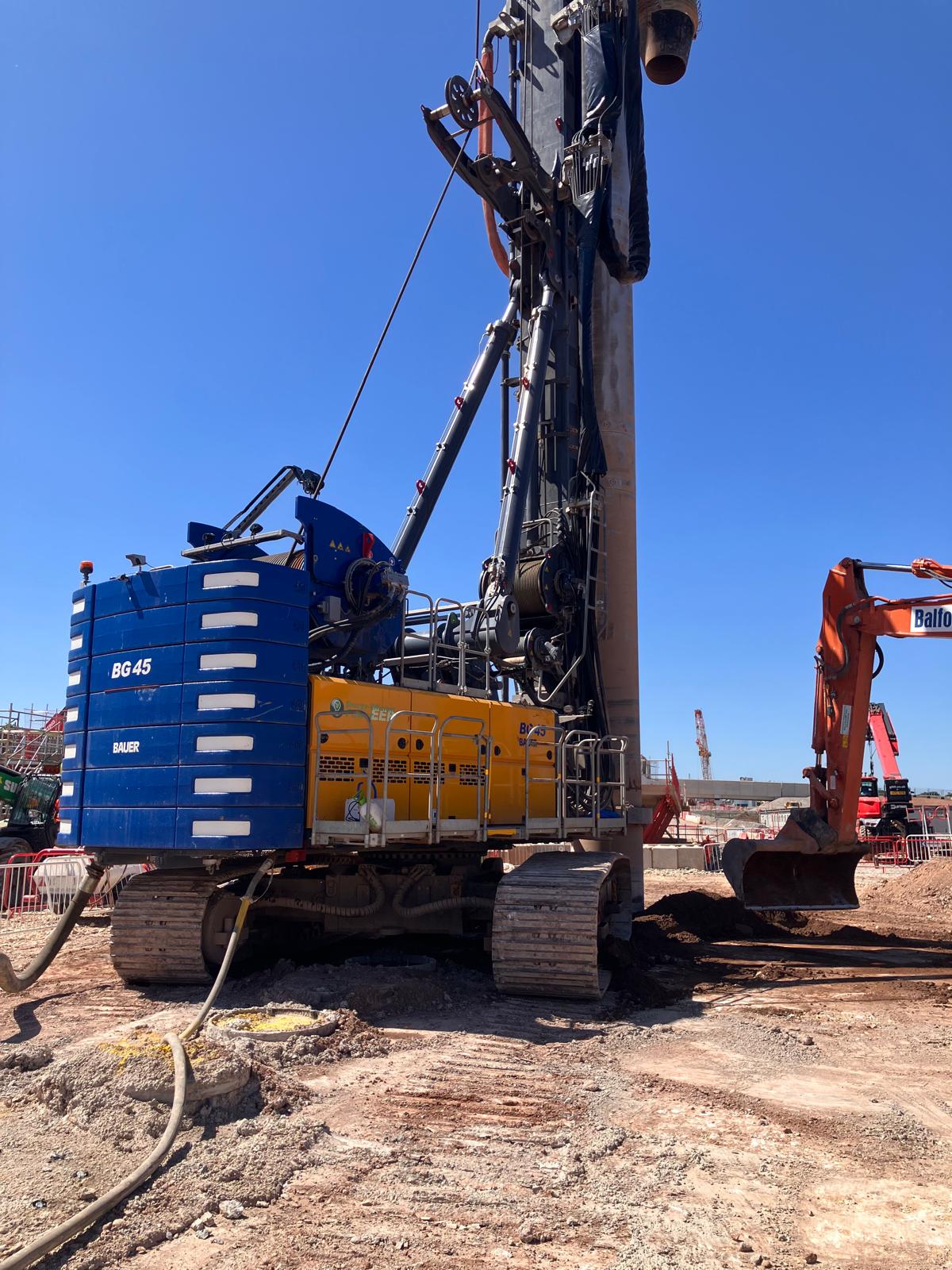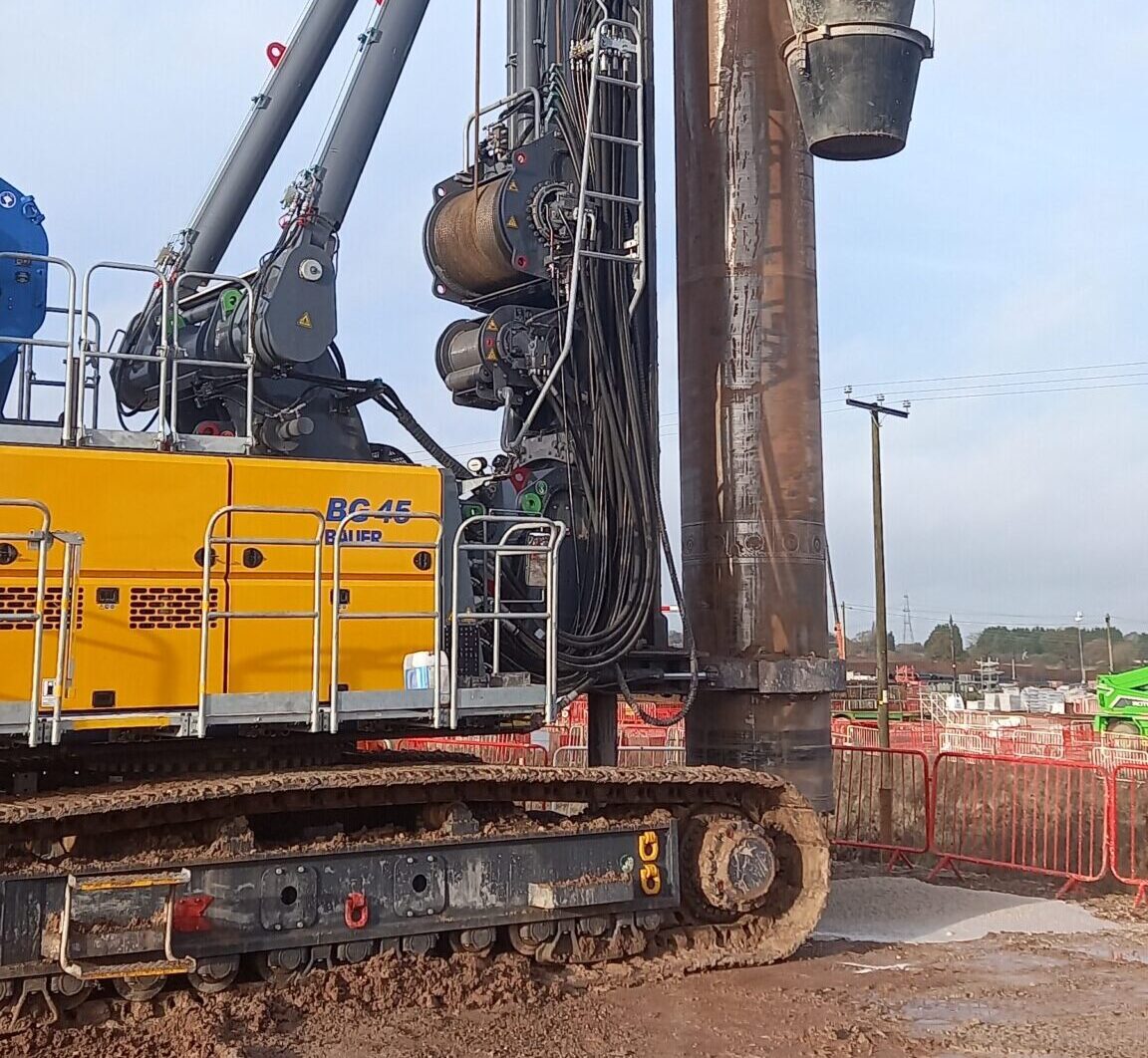Ideal for challenging ground and groundwater conditions, Cased Continuous Flight Auger (CCFA) piling combines Continuous Flight Auger drilling (CFA) with temporary casing to deliver enhanced stability and productivity.

Key technical information
| Maximum pile depth | 23m | |
| Maximum diameter | 1080/1180mm | |
| Maximum pile lengths | 21.5m (780/880 casing) | 18m (1080/1180 casing) |
The CCFA system was developed to combine the more cost-effective CFA technique with heavy-duty casings that are traditionally associated with the rotary bored piling technique. Depending on ground conditions and water table, CCFA piling can be used to construct deep secant or contiguous piled walls. It is also well-suited for basement and retaining wall construction, offering the necessary depth and stability for below-ground structures.
With the potential for significantly higher productivity than traditional rotary bored piling techniques, CCFA piling can be a more efficient choice for large-scale or time-sensitive projects. The technique also provides enhanced vertical tolerance – with an accuracy of 1 in 150 compared to 1 in 75 for uncased CFA piles – contributing to greater precision, structural integrity and alignment of the installed piles. These benefits ensure safer, more efficient delivery across complex infrastructure environments.
Cased CFA piles are constructed by drilling hollow stem augers encased within a string of temporary casing to the required depth. Using a twin rotary drive system, we extract soil and install casing simultaneously, enhancing borehole stability and preventing loose or soft soils from collapsing into the hole – a common cause of overbreak in uncased methods. The auger is also inserted and extracted within the casing, which reduces the risk of “flighting”, minimising disturbance to surrounding soil. This precision is crucial when constructing secant or contiguous piled walls, especially in urban or sensitive environments.
The lead casing and auger are fitted with tungsten-tipped cutting teeth, making the system well-suited for hard ground conditions, unlike the traditional CFA technique. Once the required depth has been achieved, the auger and casing string is extracted slowly and concrete is pumped through the hollow stem auger, filling the bore beneath it.


